
Museum of Islamic Art Inaugurates the Islamic Glass Exhibitions
Aug 02, 2012 Exhibition
The exhibitions feature over one hundred pieces of glass from the museum collection, most of which were never on show before, as well as some contributions from a number of collections belonging to Qatar Museum Authority. The two exhibitions are connected in their exploration of Islamic glass, but different in seeing it from new perspectives, both ancient and modern. The exhibitions will stay on view until January 7, 2013 on the fourth level of the Museum of Islamic Art.
Commenting on the importance of this double exhibition for MIA, Aisha Al Khater, Director of the Museum of Islamic Art, said: "The Museum of Islamic Art is proud to present its first in-house exhibition. These exhibitions, which explore an area that is of essence to the Middle East region, focus on the technique and the beauty of the artifacts. The Islamic Glass exhibitions commence a series of in-house exhibitions curated by our own specialists and using the splendid collections of the Museum of Islamic Art."
Featuring the contributions of ancient and medieval glassmaking techniques, methods and history of the production of Islamic glass, “The Intelligence of Tradition: Antiquity and Early Islamic Glass†exhibition is on view in the east gallery. Ancient and early Islamic glass pieces are displayed together to illustrate the ancient Egyptian, Hellenistic, Roman and Sasanian techniques used by Islamic glassmakers. Short films on glass blowing and decorative techniques with narration were produced for this exhibition, demonstrating methods used in the Islamic world. They are shown in the screening room attached to the gallery.
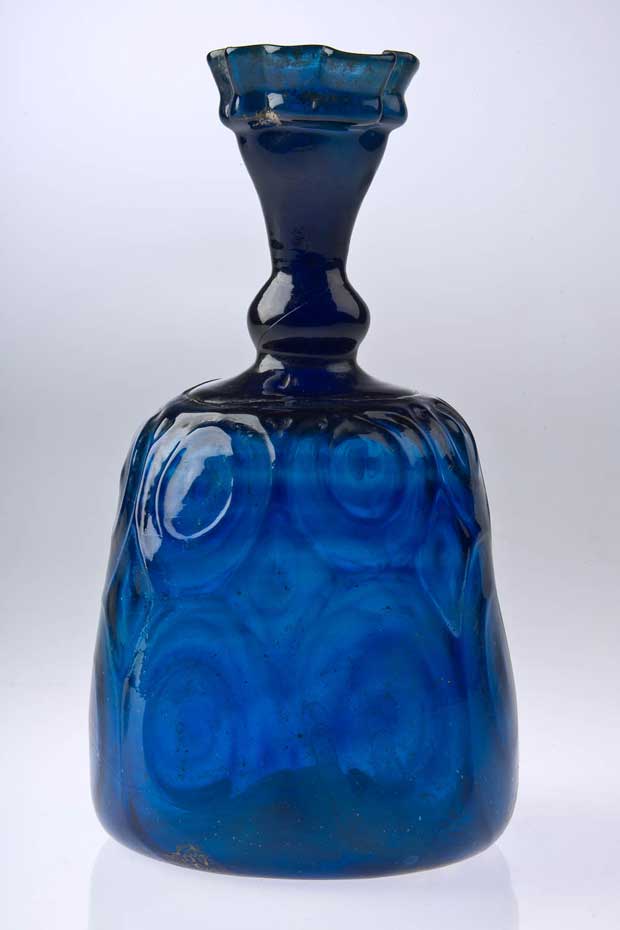 Bottle / Iran, 12th –early 13th century, Mould-blown glass with tooled mouth, Museum of Islamic Art, GL.521 / Courtesy of Museum of Islamic Art (MIA)
Bottle / Iran, 12th –early 13th century, Mould-blown glass with tooled mouth, Museum of Islamic Art, GL.521 / Courtesy of Museum of Islamic Art (MIA)
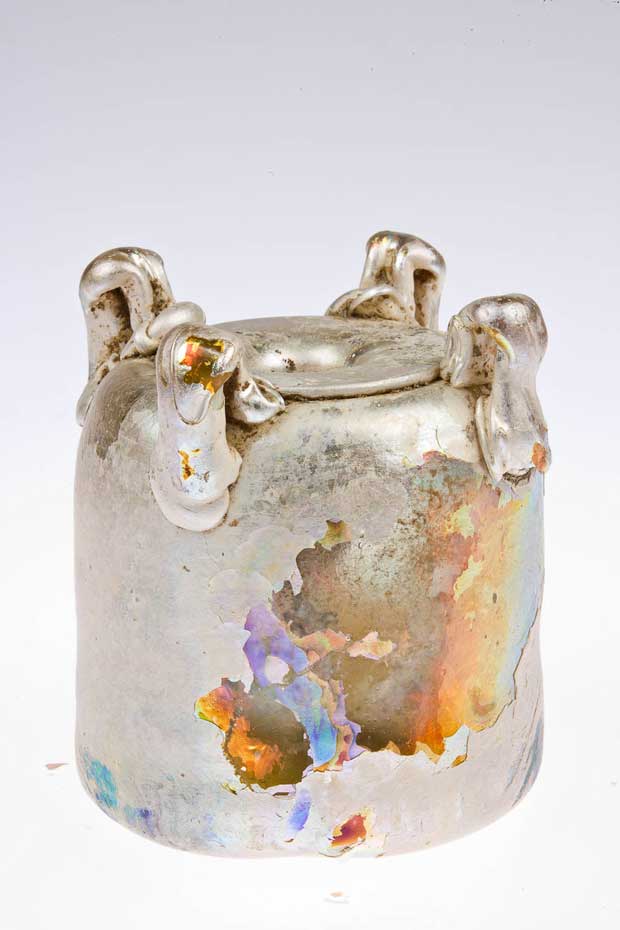 Inkwell / Iran, 9th -10th century, Blown glass with applied loops, Museum of Islamic Art, GL.520 / Courtesy of Museum of Islamic Art (MIA)
Inkwell / Iran, 9th -10th century, Blown glass with applied loops, Museum of Islamic Art, GL.520 / Courtesy of Museum of Islamic Art (MIA)
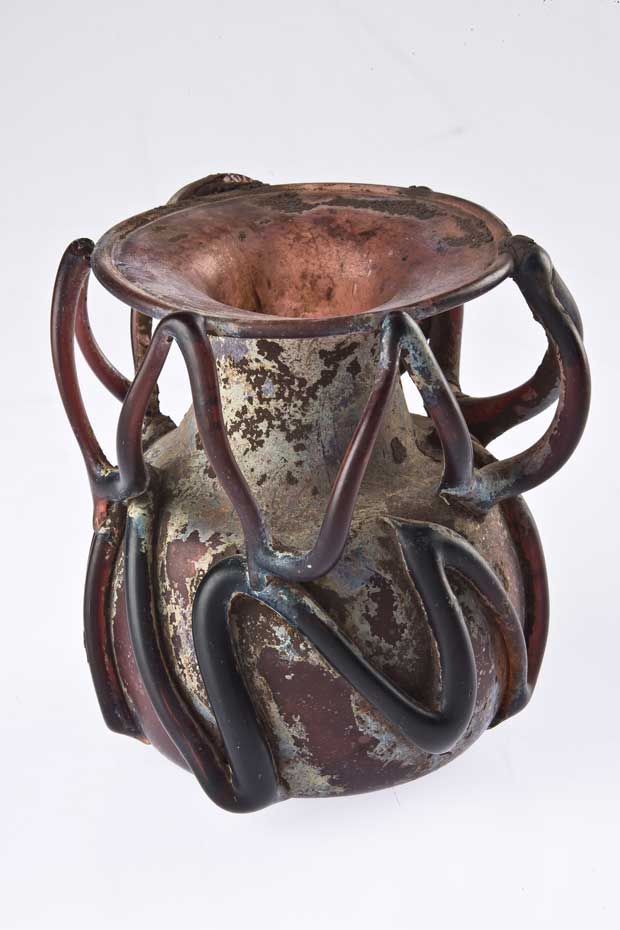 Jar / Levantine region, 7th-8th century, Blown glass with applied trails, Museum of Islamic Art, GL.84 / Courtesy of Museum of Islamic Art (MIA)
Jar / Levantine region, 7th-8th century, Blown glass with applied trails, Museum of Islamic Art, GL.84 / Courtesy of Museum of Islamic Art (MIA)
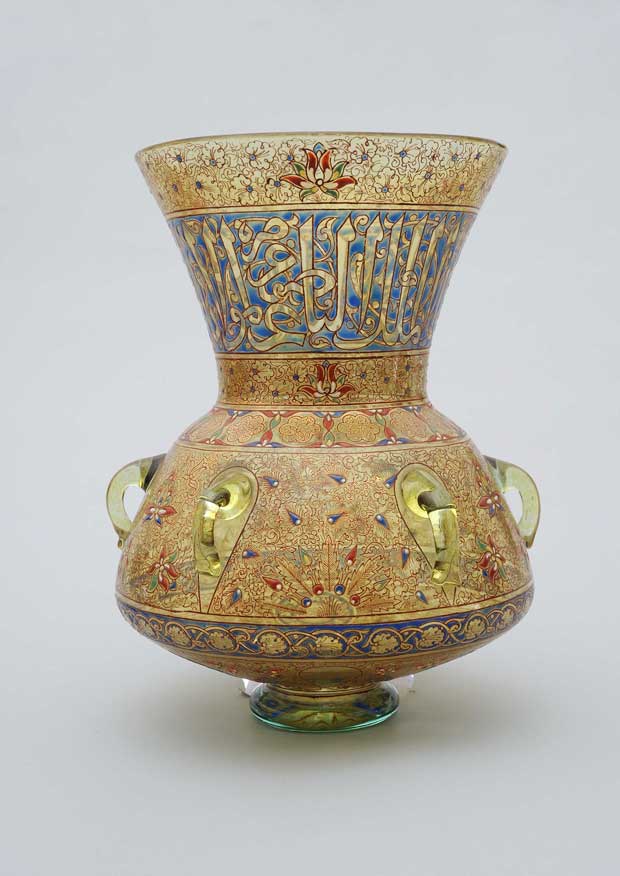 Mamluk Revival Lamp / Made by Philippe-Joseph Brocard, France (Paris), c. 1870 – 1880, Blown colourless glass with applied loops, enameled and gilded decoration, Museum of Islamic Art, GL.153 / Courtesy of Museum of Islamic Art (MIA)
Mamluk Revival Lamp / Made by Philippe-Joseph Brocard, France (Paris), c. 1870 – 1880, Blown colourless glass with applied loops, enameled and gilded decoration, Museum of Islamic Art, GL.153 / Courtesy of Museum of Islamic Art (MIA)
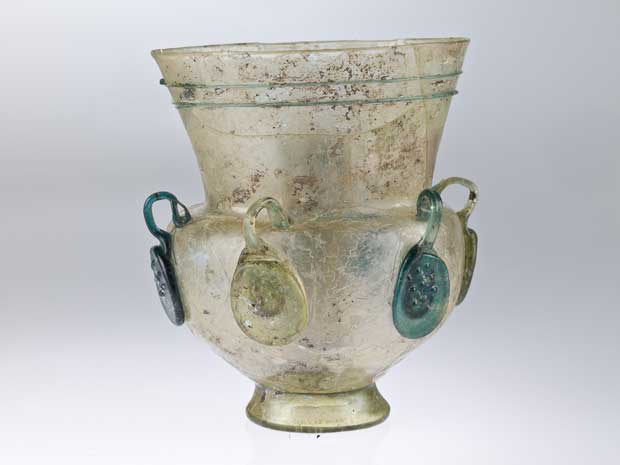 Mosque Lamp / Syria or Iran, 11th century, Blown colourless glass with applied threading, hooks and impressed bosses in blue and yellow glass, Museum of Islamic Art, GL.535 / Courtesy of Museum of Islamic Art (MIA)
Mosque Lamp / Syria or Iran, 11th century, Blown colourless glass with applied threading, hooks and impressed bosses in blue and yellow glass, Museum of Islamic Art, GL.535 / Courtesy of Museum of Islamic Art (MIA)
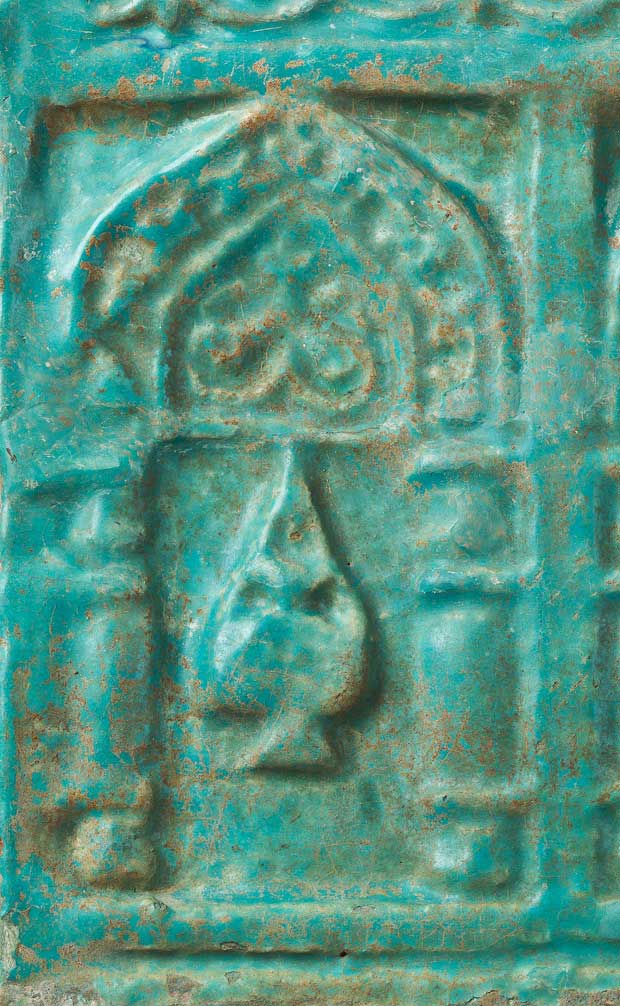 Tile / Iran, 13th century, Fritware with turquoise glaze, Museum of Islamic Art, PO.363 / Courtesy of Museum of Islamic Art (MIA)
Tile / Iran, 13th century, Fritware with turquoise glaze, Museum of Islamic Art, PO.363 / Courtesy of Museum of Islamic Art (MIA)
Representing the full scope of Islamic art, the MIA collection includes manuscripts, ceramics, metal, glass, ivory, textiles, wood and precious stones. Collected from three continents, including countries across the Middle East, and reaching as far as Spain and China, the Museum’s artworks date from the 7th through to the 20th century. The pieces represent the diversity of the Islamic world, and are of the highest quality. Designed by noted architect I.M. Pei, the museum building rises from the sea at the end of Doha’s Corniche. Inspired by classic Islamic architecture, the building further glorifies the pieces contained within it. The MIA is the flagship project of the Qatar Museums Authority, which under the leadership of its Chairperson, H.E. Sheikha Al Mayassa, is transforming the State of Qatar into a cultural capital of the Middle East.
Comments
Add a comment